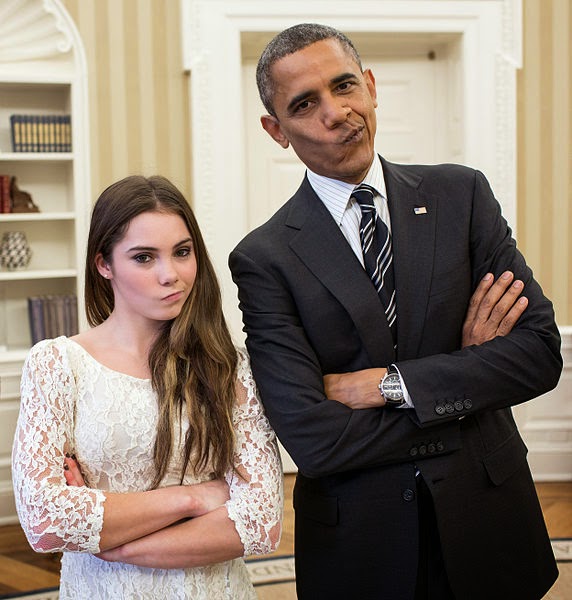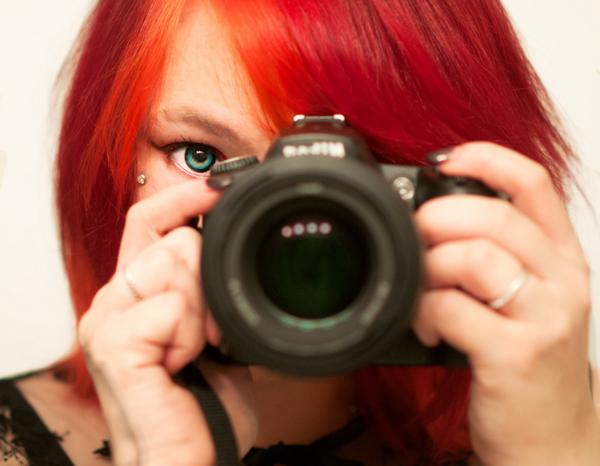![]() |
| The 16 Days of Activism is a worldwide campaign to end violence against women. Photo credit: UN Women. |
Today is Thanksgiving in my country of origin. It is the holiday in which families and friends gather to share a long meal and be together. To talk. To laugh. To be thankful.
In France, where I live such long meals happen quite often, to the point I grow tired of dining. Sometimes at long dinners here, I remember myself as a small child at my grandmother's Thanksgiving table covered in pumpkin pies, growing more and more restless in the sunroom of their lovely home near Gettysburg, Pennsylvania because the plastic chair cover was sticking to my tights from sitting so long.
How far I have come from those days. In some ways. In fact, during the past two years, I have learned more about resiliency and growth because living in a foreign country is like shaking off any idea of cultural rules and trying to not judge myself or others for not understanding what is often perceived as cultural givens. Points of growth come from understanding that the phrase, "It's cultural," somehow gives credibility for why things are the way they are.
Upon some reflection, I have come to the conclusion that this Thanksgiving I am most thankful for my ability to summon resiliency. I imagine that by working nonstop most of my life for certain goals that I will attain them, that if I do not give up, eventually, I will look up and one day, the goal will arrive. This is not to say, any goal
just arrives or all of them. It is to say that through effort, determination, and resiliency that keeping on, eventually, leads one to true change.
As an athlete, that happened for me. I ran two ultramarathons with a heart problem when most cardiologists said that I could not. Then opted due to more severe heart complications during graduate school to have a heart surgery that confirmed what I had always sort of known, that my heart issue was far more severe than thought for the seventeen years preceding. Yet, I remember laying on the surgery table wide awake, watching my heart beating on the screen completely outside of my own body's control, and the cardiologist actually asking me if I was sure I had supraventricular tachycardia (SVT) because he could not find it. I thought to myself, this man has my heart in his hands, literally, yet he knows nothing of my life story. Of what brought me here, to this moment. He has no idea how often during races, I had to ensure that I took care of myself better than everyone around me because my SVT was not just a quickened heart rate; that when my SVT launched, my chest rocked, my eyes rolled back in my head, my lips sucked in and the loss of oxygen usually rendered me unaware within minutes. He does not know the moment I decided to do this was watching my baby sister's distressed face in the streets of Paris as I tried to calm my SVT because I swore with only four days in Paris, she would not spend her last full day in a hospital. Instead, I just looked at him and said, "Yes, I am sure. I am positive, I have SVT."
A few minutes later, he found the problem in the core of my heart. He then called in another cardiologist for a second opinion because the risk had grown enormously.
I walk often by the Institute that performed the
successful heart surgery as it is around the corner from my pink cottage. I stare inside and think back to how I willed myself on that table to keep going and now my heart problem is resolved. The same way I willed the 17-year-old girl from a violent home to believe in my own education and my dreams to live in Manhattan. The same way I willed the 25-year-old homeowner trying to protect my property before the global financial crisis on a publishing salary. The same way, I willed the 28-year-old to move to Paris to study French at Sorbonne. Just keep going, eventually I will get there. And, I have. I stood this May one year after my heart surgery and walked the stage earning my Master's degree, a goal that took more years than I dare count.
Yet, that moment the cardiologist questioned a reality so real to me reminded me starkly of the times in my life when I have shared incredible truths, risked intense vulnerability, only to have someone stare back at me with disbelief and question that truth.
And, often those times had to do with me as a victim of violence. It reminded me of the British police detective who erred constantly as he investigated my sexual assault, which had happened in a very well-known London hotel. It reminded me of the ninth grade history professor who gave me a zero in his class even after I told him my final paper was late because I had been having heart problems that no one seemed to understand but kept telling me were from anxiety, although I remained completely silent of the swell of domestic violence occurring in my family's home at the same time because of my own personal shame and the culture that grew that.
On this Thanksgiving, my thoughts are focused on why culture is often used as a blanket reason for why things are the way they are. Not American culture. Or French culture. But the pervasive global culture that accepts women worldwide are harmed.
Two days ago, on November 25, international organizations and NGOs worldwide launched the
16 Days of Activism to end violence against women. The violent stories I replay in my mind from my own life trying to make sense of my own story. The stories I have listened to from young women in Congo, Mozambique, South Africa, France, the United States. The frequency of violence is astounding.
According to the
World Health Organization, "Estimates suggest that one in three women globally have experienced either physical or sexual violence from a partner, or sexual violence by a non-partner at some point in their lives, and that levels of violence against women and girls remain extremely high."
And, that in some parts of the world, sexual violence is endemic – reports of non-partner sexual violence are as high as 21% in areas of sub-Saharan Africa.
Violence against women is a global pandemic, not confined to any one country or region.
UN Women says, "around 120 million girls worldwide (slightly more than 1 in 10) have experienced forced intercourse or other forced sexual acts at some point in their lives." In the United States alone, the
World Bank estimates that, "annual costs of intimate partner violence have been calculated at USD 5.8 billion."
That is outright and costly human suffering from every angle.
What does most research suggest as the way to end violence against women? UN Women suggests the current culture of shame and discrimination that surrounds violence against women has to shift.
Violence against women and girls is rooted in gender-based discrimination and social norms and gender stereotypes that perpetuate such violence. Given the devastating effect violence has on women, efforts have mainly focused on responses and services for survivors. However, the best way to end violence against women and girls is to prevent it from happening in the first place by addressing its root and structural causes.
Change has to happen. In response, from November 25 to December 10, the
16 Days of Activism calls on governments, organizations, advocates, and you to call for an end to gender-based violence as a basic human right. The United Nations urges participation in
Orange your Neighbourhood, to wear orange to reflect your support in breaking the stigma that surrounds violence against women. To change the culture of acceptance to that of nonacceptance.
I think today of the many loved friends, family, and colleagues I have in my life, and visually if we all sat down at a Thanksgiving table how so many of us would be wearing orange. How so many of us have experienced violence in some way. And, how all of us have channeled that experience in our own way to heal and find resiliency.
Then, I think of all the incredible women I have met all over the world who have found or will need to find that kind of resiliency to move beyond the suffering that comes from gender-based violence, and I am thankful for the strength that can be forged in a collective culture that does not accept violence against women. It reminds me to stay resilient in my pursuit to ensure greater human rights for all of us everywhere. Because, if we just keep going, one day, through effort, determination, and resiliency, that keeping on will lead us to true change: women everywhere will be safer. And, that will be the worldwide culture, just the way things are.
The 16 Days of Activism ends on December 10,
Human Rights Day.
 In 2003, she started her project Savon de Corps, with soaps made with a part of her own fat obtained from a liposuction. She held a solo exhibit of her Boutique at Senda Gallery, in Barcelona’s Paseo de Gracia, a street where the world’s most glamorous clothing brands are based, and another exhibition with her whole work at Casal Solleric, Palma de Mallorca, both in Spain.
In 2003, she started her project Savon de Corps, with soaps made with a part of her own fat obtained from a liposuction. She held a solo exhibit of her Boutique at Senda Gallery, in Barcelona’s Paseo de Gracia, a street where the world’s most glamorous clothing brands are based, and another exhibition with her whole work at Casal Solleric, Palma de Mallorca, both in Spain. 




































.jpg)






